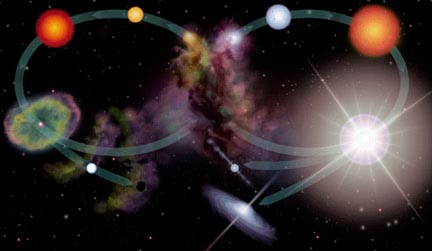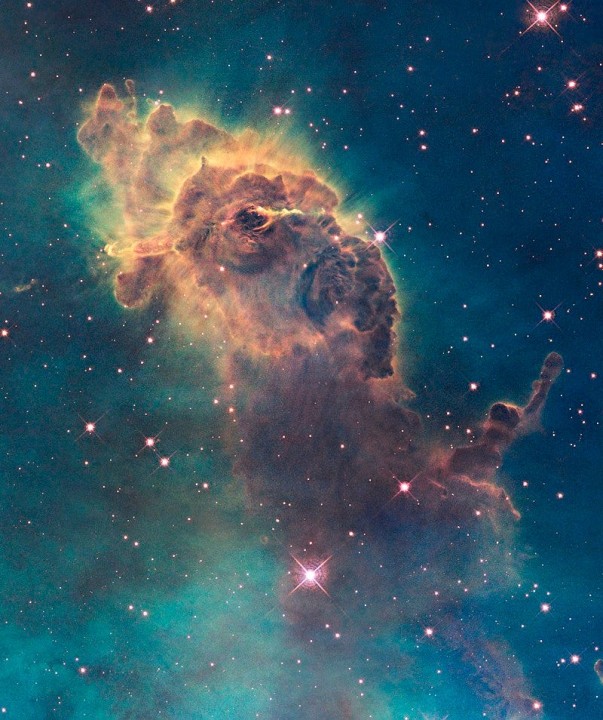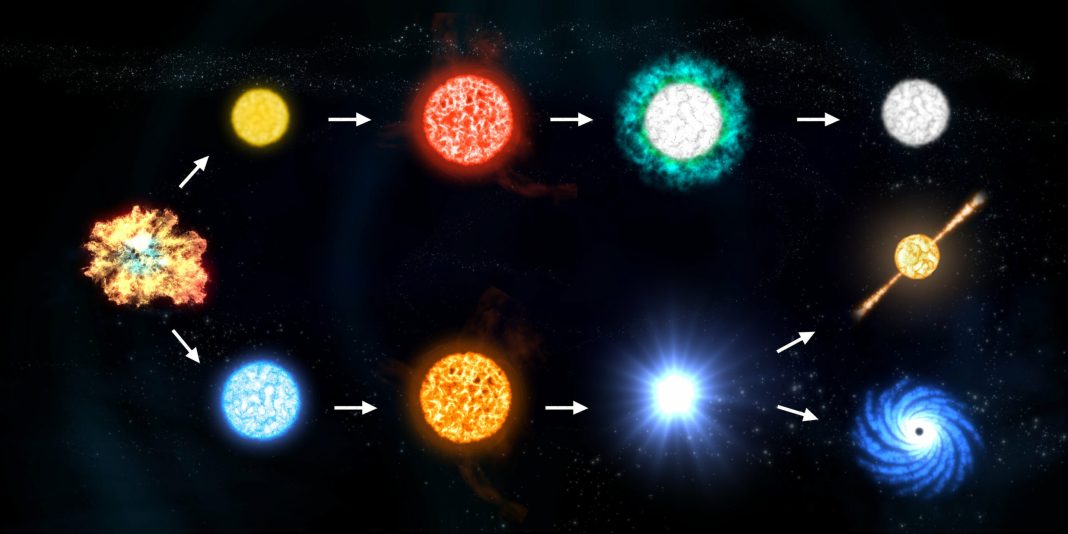By Priyanka Shrivas
The universe is a vast expanse filled with countless stars, each at a different stage of its life cycle. From the birth of stars in stellar nurseries to their dramatic deaths as black holes or neutron stars, the journey of a star is a fascinating process that spans millions to billions of years. Understanding this life cycle not only gives us insight into the stars themselves but also into the evolution of galaxies and the universe as a whole.
Stars are born in regions of space known as stellar nurseries, which are dense clouds of gas and dust called nebulae. These nebulae, often vast and chaotic, are the cradles of star formation. Under the influence of gravity, particles within the nebula begin to collapse and clump together. As the cloud contracts, it heats up, forming a protostar—a hot core that will eventually become a star.

During this phase, the protostar is not yet hot enough to initiate nuclear fusion, the process that powers stars. However, as the protostar accumulates more mass, its core temperature rises, eventually reaching a point where hydrogen atoms begin to fuse into helium. This marks the birth of a new star, as it enters the next stage of its life.
Once nuclear fusion begins, the star enters the main sequence phase, the longest and most stable period of its life. During this time, the star fuses hydrogen into helium in its core, producing light and heat. The balance between gravitational force pulling the star inward and the pressure from nuclear fusion pushing outward keeps the star stable.
The length of time a star spends in the main sequence phase depends on its mass. Massive stars burn through their hydrogen fuel much faster than smaller stars, meaning they have shorter lifespans. For example, a star like our Sun will remain in the main sequence for about 10 billion years, while more massive stars may only last a few million years.
As a star exhausts its hydrogen fuel, the balance between gravity and pressure shifts, causing the core to contract and heat up. This increase in temperature allows the fusion of heavier elements, such as helium into carbon. The outer layers of the star expand dramatically, and it becomes a red giant or supergiant, depending on its initial mass.
For a star like the Sun, this expansion will eventually lead to the shedding of its outer layers, creating a beautiful planetary nebula. The remaining core becomes a white dwarf—a small, dense remnant that slowly cools and fades over time.
In more massive stars, the process is more violent. After the red supergiant phase, the core continues to fuse heavier elements until iron is formed. Fusion of iron does not produce energy, leading to a catastrophic core collapse. This triggers a supernova—a powerful explosion that outshines entire galaxies for a brief period. The supernova disperses elements into space, seeding future generations of stars and planets.
The remnants of a supernova depend on the mass of the original star. If the remaining core is between about 1.4 and 3 times the mass of the Sun, it will become a neutron star. Neutron stars are incredibly dense, with a teaspoon of their material weighing billions of tons on Earth.

If the core is more than three times the mass of the Sun, the force of gravity will overwhelm even the neutrons, collapsing the core into a black hole—a region of space where gravity is so strong that nothing, not even light, can escape.
In Conclusion: The life cycle of a star is a testament to the dynamic and ever-changing nature of the universe. From their birth in stellar nurseries to their demise as white dwarfs, neutron stars, or black holes, stars play a crucial role in the cosmos. They create and distribute the elements necessary for life, and their life cycles drive the evolution of galaxies. By studying stars, we gain a deeper understanding of our place in the universe and the forces that shape it.




